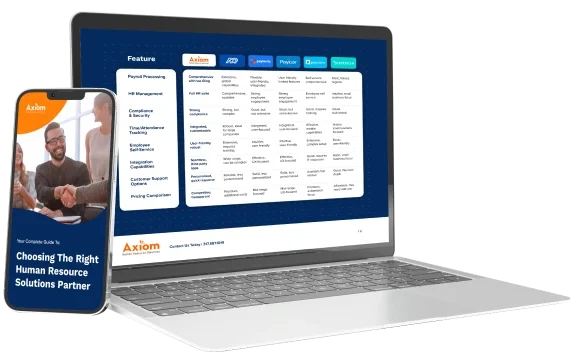In more cases than not, businesses—even small businesses—are using mobile apps for time management and expense management services. The growth of mobile apps for functions like payroll and staff notifications is catching up quickly. What’s more, 67% of small business owners call these applications “critical” to their business.
Those numbers aren’t going to go anywhere but up—and quickly. Users who’ve gotten on board with mobile apps cite convenience, ease of access, and better productivity as benefits that make them indispensable. So why hasn’t everyone jumped on board? Concerns about security, most often, although data service costs come in at a close second.
Given the huge and ever growing array of options for human resources apps, going mobile isn’t something you can just shut your eyes and jump into. Infinite possibilities and some extremely sharp developers have created a work universe rich with options. Which is a great thing once you get a handle on it. And overwhelming if you’re starting from scratch.
A little forethought is all you need. Consider first about who in your organization is most likely to benefit and what, exactly, can help support those team members in doing their jobs. Look into which software applications are accessed most frequently to figure out what’s worth taking mobile.
The equipment question is another big one for most employers: Will you provide mobile devices or depend on employees to bring their own? Trade-offs come in cost, security, and privacy. Of course not having to supply a lot of costly electronic devices is appealing, and more employees prefer not to be saddled with an additional device. But security features that feel necessary and legitimate when applied to a company-owned device are constraining and worrying when you’re asking an employee to allow them on their personal devices. Is sacrificing the security of your data worth the extra cost of providing mobile devices?
When choosing an appropriate platform and mobile application, part of keeping data secure is ensuring that employees need to key in a password each time they open the application, especially for employees who have access to other staff members’ personal data. (In other words, you don’t want the platform to run “full token.”) And it’s extremely important that data on the supporting platform is stored in a secure place while being backed up consistently and continuously. The recommended solution would be a Department of Defense-rated facility.
Finally, and as is true of all human resources technology, usability is a piece of cake, but the customization, setup, and support functions can be challenging. Which is why most small businesses contract with a service provider for these services.
Going mobile is a change, yes. It takes some investment of time and cash, true. Just like buying all those desktop computers did way back when I was much newer to the HR scene. You see how it’s gone with those.
